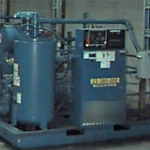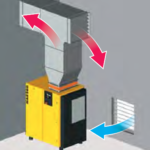
A compressed air system can have superior efficiency on the supply side, but yet waste a large portion of what its compressors produce. Here are five common items of demand side improvement for any system:
- Fix leakage — Typical compressed air leakage levels are between 15% and 30% of average flow. Some outlier plants leak over 80% of production (ouch!). A regular leakage detection and repair program can bring this number down in a big way and save costs.
- Lower pressure — Any unregulated compressed air demand will consume about 1% more flow for every 1 psi in extra pressure. Lowering plant pressure and readjusting regulators to low pressure can reduce energy costs.
- Eliminate inappropriate use — People are so innovative, they invent new uses for compressed air all the time, and it is so easy to hook up to the compressed air system. Compressed air is 10 times more costly than direct drive electrical, so this should be kept in mind when dreaming up any new compressed air use.
- Turn it off — One very good way of reducing leakage flow or inappropriate use is to turn off the compressed air system when it is not needed, such as during shutdown hours or when individual machines are not running. Make this an automatic process using automatic solenoids to take the human element out of the equation.
- Drainage — Often times, drains are left open to remove water or lubricants that collect in low spots. This wastes energy and should be addressed by applying airless drains. Water problems should be fixed; this indicates problems in the compressed air room.





Leave a Reply